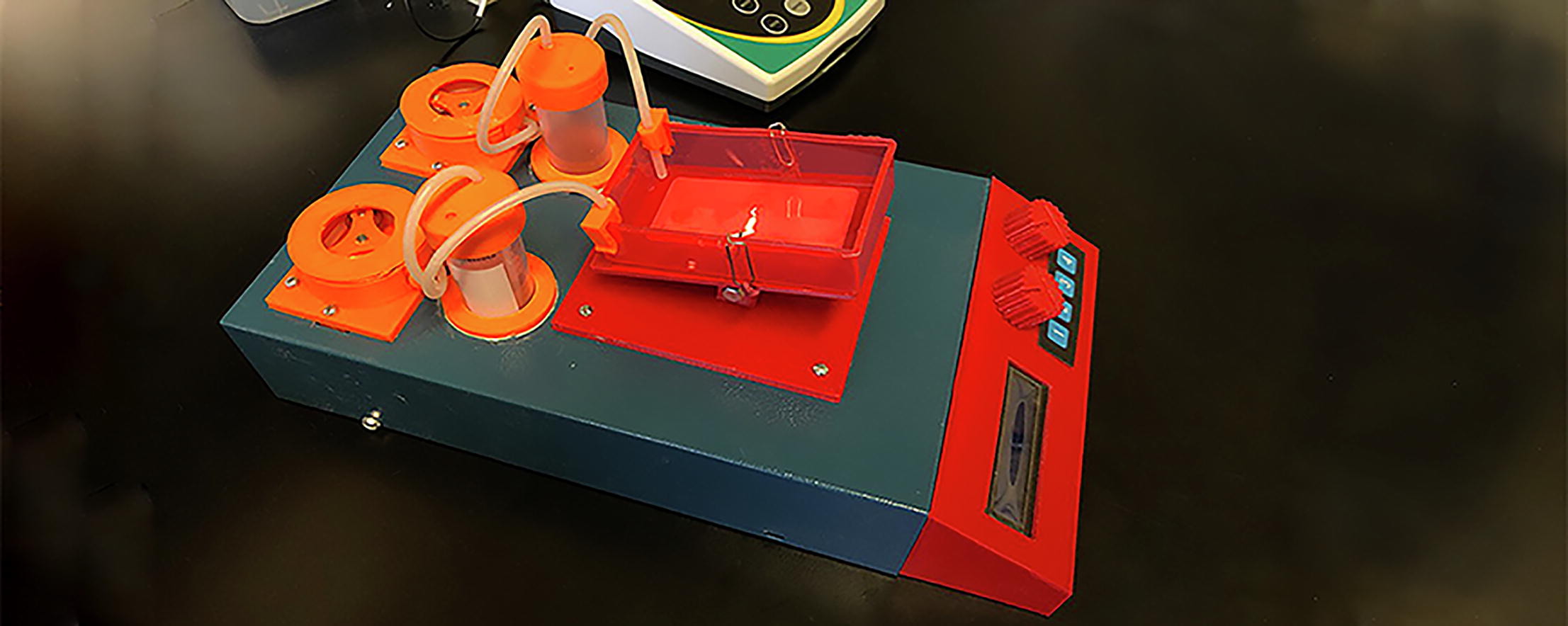Western blotting is a widely-used technique in biomedical research to identify specific proteins within complex samples. However, the process can be repetitive and time-consuming, especially with the manual washing steps required after antibody incubation. An open-source automated western blot processor, developed by Jorge Bravo-Martinez, provides a low-cost alternative to automate these washing steps, saving researchers time and reducing the likelihood of human error. Built with readily available components, this device aims to make western blot automation accessible to labs with limited budgets.
About the Automated Western Blot Processor
This open-source device automates the labor-intensive washing steps in the western blot process. Using two commercial peristaltic pumps and a simple mixer, it manages the washing cycles following antibody incubation, a key step in ensuring consistent and high-quality results. The system is designed with flexibility in mind, allowing customization for various cyclic tasks beyond western blotting, such as immunohistochemistry or histological sample preparation.
Key Features
- Automated Washing Process: Reduces the manual effort involved in western blotting by automating the washing cycles.
- Low Cost: Estimated at $135.5, significantly cheaper than commercial alternatives that perform similar tasks.
- Customizable Design: Built with open-source hardware, the processor can be adapted for other repetitive lab tasks.
- User-Friendly Operation: Controlled via an Arduino Mega with a simple interface, allowing users to select wash cycles and timing.
Design and Components
The design includes two main components to manage the washing process:
- Peristaltic Pumps: The device uses two peristaltic pumps to supply clean buffer to the washing tray and remove waste. These pumps, operated by a 12V motor, provide sufficient torque and reliability at a low cost.
- Mixing Platform: A mixer holds the western blot membrane tray, exposing it to the washing buffer during cycles. The tray is connected to an Arduino-controlled motor, which ensures precise timing and movement.
The control system includes a display, keyboard, and potentiometers to adjust the number and duration of washes. Users interact with the system through a simple interface, adjusting parameters with ease.
Cost and Accessibility
With a total cost of $135.5, the automated western blot processor is accessible for labs operating on tight budgets. The project’s open-source nature means that all design files, including 3D-printable parts, PCB files, and Arduino firmware, are freely available. This setup provides a budget-friendly option compared to commercial devices that often cost thousands of dollars.
Performance and Results
The device effectively replicates the manual western blot washing process, achieving similar levels of protein detection consistency and accuracy. In trials, it performed comparably to commercial western blot processors and showed minimal variation in wash cycles and reagent volumes. Researchers found it reduced wash time and improved reproducibility, making it a practical tool for routine protein detection tasks.
How to Build and Use the Processor
Detailed build instructions are included in the project’s repository. Here’s a summary of the steps:
- Gather Components: All parts are specified in a Bill of Materials (BOM), with links to purchase options.
- 3D Print Parts: Use the provided STL files to print the necessary components for the mixer and control panel.
- Assemble Electronics: Follow the wiring schematic to connect the components to an Arduino Mega.
- Install Firmware: Upload the Arduino firmware from the repository, which includes options for controlling the number and duration of wash cycles.
- Operate the Device: Once set up, select the desired washing parameters, and the device will manage the entire washing process.
Full documentation, including assembly diagrams and troubleshooting tips, can be found in the repository linked below.
This open-source automated western blot processor represents a significant step toward making lab automation accessible and affordable. By providing an alternative to expensive commercial systems, it enables researchers to conduct routine western blot processes more efficiently, allowing them to focus on critical research tasks. With its low cost, user-friendly operation, and open-source design, this device is a valuable tool for any lab performing regular western blotting.he potential of open-source science to make advanced research techniques accessible and adaptable, empowering researchers worldwide to innovate and collaborate.

